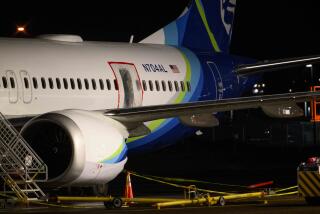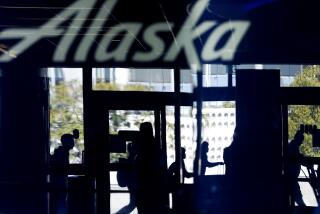Airline seating trend puts the squeeze on economy fliers
If you fly in the economy section, it may seem lately that you’re sharing the cabin with more passengers than ever.
In fact, a new analysis suggests that some airlines are carrying slightly fewer passengers per plane, but it may seem crowded because more room has been set aside for passengers in the front of the cabin and less to fliers in the back.
The shift in cabin space is evident by the number of airlines that have installed “slim line” seats for economy and coach passengers while adding extra rows of roomy seats for high-paying business- and first-class passengers, said John Walton, data director for the flight rating site Routehappy.com.
Slim-line seats have thin cushions in the backrest, allowing airlines to squeeze in an extra row of seats per cabin.
For his analysis, Walton compared the original seat arrangement for several carriers with the current seating layout.
For example, United Airlines launched the Boeing 777-200 in 1995 with 12 first-class passenger seats, 49 business-class seats and 231 in economy — for a total of 292 seats. Today, one popular layout for the same plane has eight first-class seats, 40 business-class seats and 221 seats in economy — for a total of 269 seats, he said.
To make room for new, roomier lay-flat seats in the first- and business-class sections, Walton said United squeezed more coach seats in areas of the cabin that were previously occupied by galleys and lavatories.
In fact, the United 777-200s typically have four or five lavatories for the economy section, compared to six in the original configuration.
“Every inch you can save means another row of seats in the back,” Walton said.
Seth Kaplan, founding partner for the trade publication Airline Weekly, said he can’t confirm Walton’s analysis but he agrees that passengers in the back of the plane are getting squeezed more today to make room for travelers in the front.
“Densification is a major trend in the industry now,” he said.







